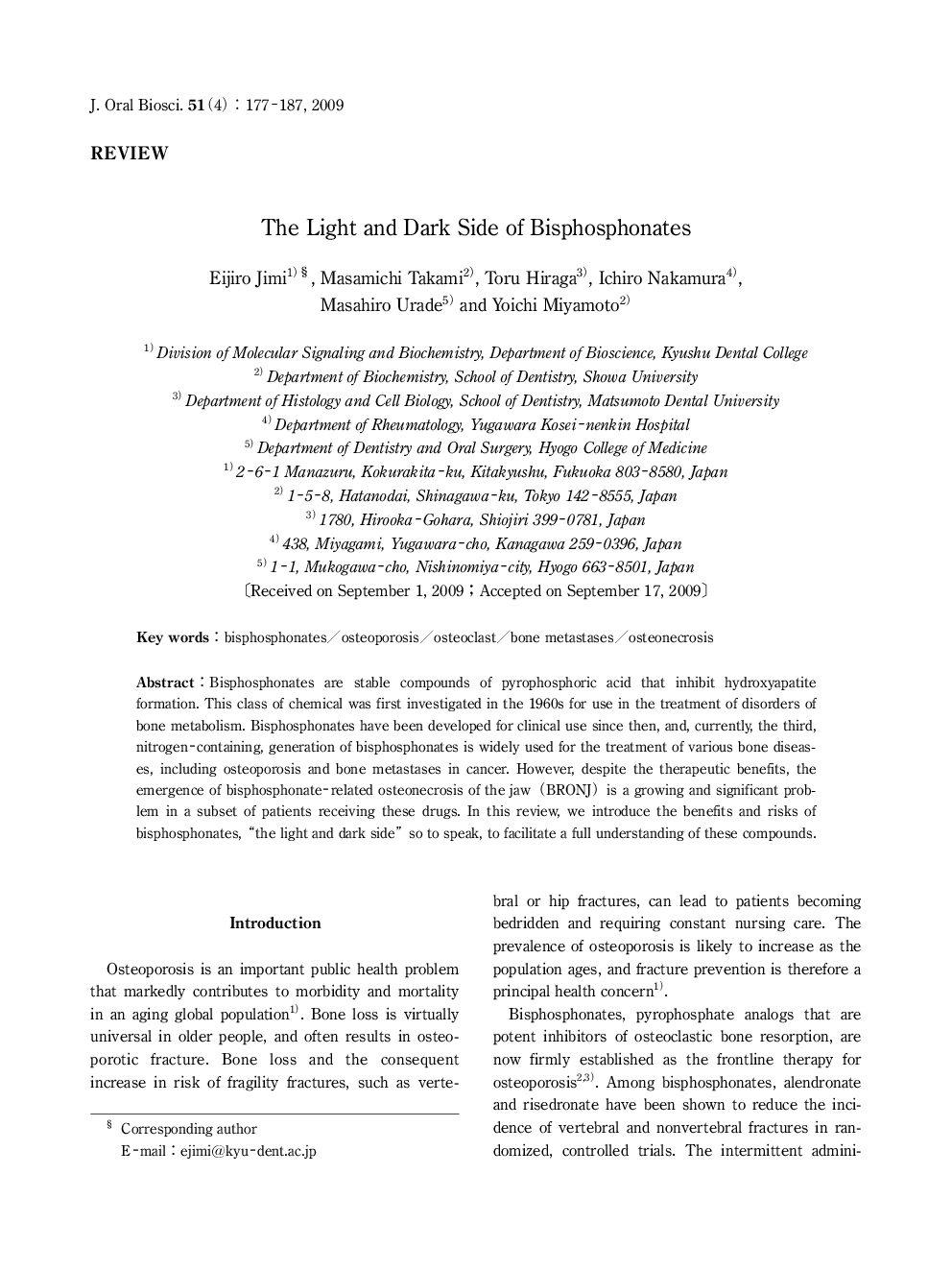| Article ID | Journal | Published Year | Pages | File Type |
|---|---|---|---|---|
| 2776996 | Journal of Oral Biosciences | 2009 | 11 Pages |
Bisphosphonates are stable compounds of pyrophosphoric acid that inhibit hydroxyapatite formation. This class of chemical was first investigated in the 1960s for use in the treatment of disorders of bone metabolism. Bisphosphonates have been developed for clinical use since then, and, currently, the third, nitrogen-containing, generation of bisphosphonates is widely used for the treatment of various bone diseases, including osteoporosis and bone metastases in cancer. However, despite the therapeutic benefits, the emergence of bisphosphonate-related osteonecrosis of the jaw (BRONJ) is a growing and significant problem in a subset of patients receiving these drugs. In this review, we introduce the benefits and risks of bisphosphonates, "the light and dark side" so to speak, to facilitate a full understanding of these compounds.
